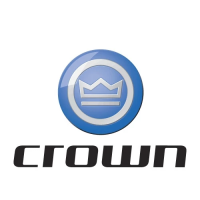LIFTING MECHANISM
Lift Chains
336
M7.5-18.0-004
08 Rev. 7/07
Lift Chain Lubrication
The most important consideration in field maintenance
of lift chains is LUBRICATION. Hard working, heavily
loaded chains cannot be expected to give satisfactory
wear life without scheduled periodic lubrication. Like all
bearing surfaces, the precision-manufactured, hard-
ened-steel, joint-wearing surfaces require a film of oil
between mating parts to prevent rapid wear.
Maintaining an oil film on all chain surfaces will:
• Minimize joint wear (chain stretch).
• Prevent corrosion.
• Reduce the possibility of pin turning.
• Minimize tight joints in roller chain.
• Promote smooth, quiet chain action.
• Lower chain tension by reducing internal friction in
the chain system.
Heavy motor oil is an excellent chain lubricant-even
used motor oil is adequate to lubricate exposed lift
chains.
Laboratory wear tests show SAE 40 oil to have greater
ability to prevent wear than SAE 10 oil. Also, SAE 40
oil is superior to hydraulic fluid or automatic transmis-
sion fluid. Generally, the heaviest (highest viscosity) oil
that will penetrate the joint works best.
Laboratory wear testing shows dry film lubes to be less
effective in preventing joint wear than fluid petroleum
based products.
Some aerosol spray lubes, such as Crown part number
063001-009, are effective, more convenient and less
messy than applying motor oils.
Whatever method is used, the oil must penetrate the
chain joint to prevent wear. Applying oil to external sur-
faces will prevent rust, but oil must flow into the live
bearing surfaces for maximum wear life. (Refer to Fig-
ure 16850).
Apply oil to chains with a narrow paint brush. A plastic
liquid detergent bottle makes a handy lube applicator.
Flood the chain with oil over its entire length every
lube-inspection period.
Frequency of lubrication will vary with operating condi-
tions and environment. The best estimate of lube pe-
riod is 100 hours actual operating truck time. Trucks
parked outdoors, used in freezers or trucks in ex-
tremely severe service, may require more frequent lu-
brication to maintain an oil film on all chain surfaces.
In dusty operating conditions, lubed chains will gather
dust. Even under these conditions wear life will be
greatly improved by periodic lubrication. Joints may ac-
quire a "paste" made up of oil and dirt, but joint wear
will still be much less than if the chain is allowed to run
dry with metal-to-metal contact between pins and
plates.
At 100 hour intervals, clean chains to remove accumu-
lation of dirt-and lubricate immediately. (Do not steam
clean chains.)
Lift Chain Replacement
The first step in chain replacement is to find the chain
part number in your service manual parts list.
An important factor in ordering replacement chain from
the truck manufacturer is that special chains may be
specified for your truck with certified minimum ultimate
strength.
If the unit is equipped with two strands, replace chains
as a pair. It will be virtually impossible to maintain uni-
form loading between the strands if a new chain is put
into service opposite an old chain. The joints in the old
chain will have worn through the hardest layer of the
case-hardened pin. Therefore, the wear rate on the old
chain will be greater than that on the new chain, greatly
complicating the problem of maintaining equal chain
tension.
The new chain will wear more slowly, causing it to bear
the major portion of the load, resulting in premature
wear and fatigue failure.
Figure 16850
Crown 1984 PF5856-4 Rev. 7/07

